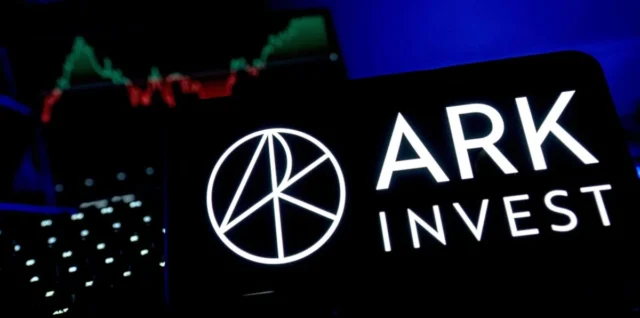Tom Lee Knows Why the Crypto Market Crashed: $BEST May Be the Safest Investment Now

The October 10 crypto crash wasn’t just another violent wick on the chart. According to Tom Lee, chairman of Ether-focused treasury and market-making firm BitMine, the selloff exposed “structural weaknesses” within major liquidity providers that only become visible when volatility hits hard. Speaking with CNBC, Lee said the record liquidation cascade, nearly $20B wiped out in hours, forced over-leveraged market makers to rapidly unwind positions as collateral values sank. That derisking drained liquidity from order books, widened spreads, and accelerated the crash in a classic feedback loop. For regular users, that kind of liquidity vacuum isn’t just macro noise. It’s when swaps fail, fees spike, and centralized wallet pipelines become bottlenecks precisely when you need them most. When the infrastructure you rely on cracks under pressure, you’re effectively outsourcing your survival to someone else’s balance sheet. That’s why many investors are now shifting their focus from price action to tools that hold up during stress. Best Wallet is positioning its presale around that exact narrative: a mobile-first, non-custodial ecosystem built to keep users in control even when market plumbing breaks elsewhere. In a post-crash environment where structural fragility is once again front and center, that message is resonating. How a Market-Maker Liquidity Crunch Spills Into Everyday Crypto Use Lee’s point is simple but uncomfortable: when major market makers run aggressively leveraged books, a shock like the October 10, 2025, crash can flip a liquidity provider into a forced seller almost instantly. Once those books start unwinding, liquidity doesn’t just thin, it evaporates. Slippage spikes, execution quality drops, and long-tail tokens or smaller venues become structurally untradeable for hours. We’ve seen versions of this story before. Centralized exchanges and brokerages often look stable right up until volatility reveals mismatched liabilities or overextended positions. For everyday users, the question is painfully practical: How do you trade, route liquidity, or rebalance portfolios without being dependent on a single entity’s balance sheet or uptime when markets are blowing up? Different wallets are attempting their own solutions. MetaMask is leaning hard into smarter routing and institutional integrations. Trust Wallet focuses on simplicity and broad asset support for casual users. Phantom expanded from Solana to EVM chains to capture multichain retail flow. Best Wallet Token, currently in presale, aims to join this field from a different angle, pairing a consumer-grade mobile UX with a security-centric backend built on Fireblocks’ MPC-CMP infrastructure. In a cycle where liquidity reliability is suddenly front-page news again, that positioning stands out. Why Best Wallet Is Positioning Itself as “Crash-Resistant” Infrastructure Most wallets still act as thin front-ends. Best Wallet is taking a different route, building a full-stack, volatility-aware ecosystem that assumes turbulence is the norm, not the exception. The team is openly targeting 40% of the global wallet market by the end of 2026, aiming at users who want institutional-grade security packaged inside a mobile-first interface. At its core is what the team calls the first fully integrated Fireblocks MPC-CMP wallet, housed within a retail app. Instead of relying on a single private key, multi-party computation splits signing across independent shards, eliminating a single-point-of-failure while keeping transactions fast enough for everyday trading. The app’s multi-wallet portfolio system lets users cleanly separate long-term holdings, active trading, and experimental positions without juggling addresses. Beyond storage, the product places a strong emphasis on access. The Upcoming Tokens portal curates early-stage presales and embeds a streamlined purchase flow, allowing users to participate in vetted launches without jumping through third-party sites. The Best DEX aggregator, powered by Rubic, pulls routes from multiple chains, DEXs, and cross-chain bridges, optimizing trades for both price and execution in real-time. On the token side, EST is designed to tie utility directly to user activity. Holders receive reduced in-app fees and can stake into a dedicated 800M-token rewards pool (8% of supply). Payouts scale proportionally with each staker’s share of the pool, and staking is live during the presale, giving early buyers a head start on compounding. That pitch appears to be resonating. The presale has already raised over $17. 2M with tokens priced at $0. 025975 and just 7 days remaining. Whale-tracking data shows two recent large purchases totaling $136k, including a confirmed $56K buy on September 2, 2025, a signal that some larger players are willing to take early directional exposure. For anyone recalibrating after the October 2025 crypto crash, tools like Best Wallet offer a more constructive response than trying to time the exact bottom. Rather than betting on perfect entries, you can build a stack that remains flexible, fee-efficient, and self-custodial the next time liquidity disappears without warning. Join the EST presale today. This article is for informational purposes only and should not be considered financial, investment, or trading advice. Authored by Aaron Walker, NewsBTC. Continue reading Tom Lee Knows Why the Crypto Market Crashed: $BEST May Be the Safest Investment Now






